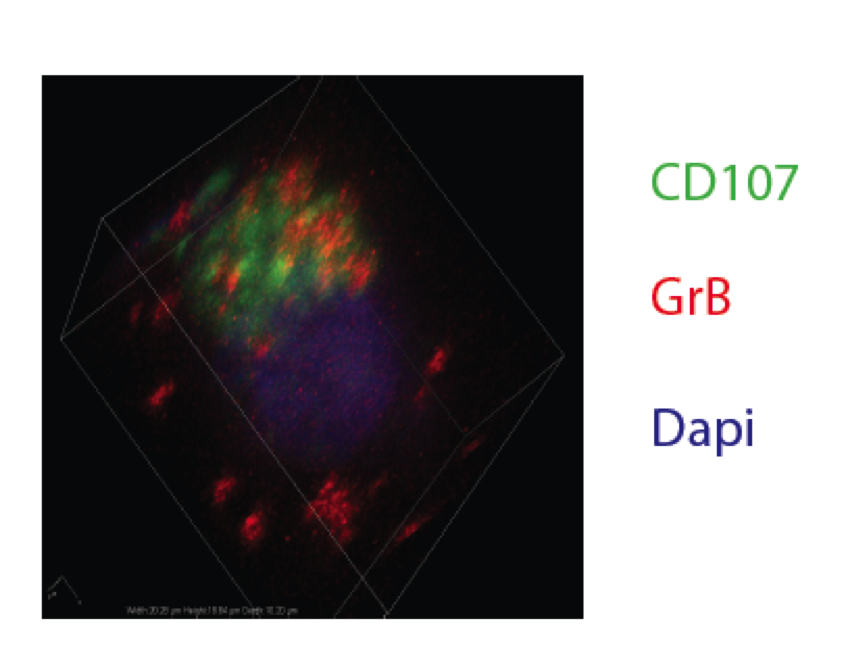Human Regulatory T Cells Undergo Self-Inflicted Damage via Granzyme Pathways Upon Activation.
Transplantation Research Center, Harvard Medical School, Boston
Boston Children's Hospital, Harvard Medical School, Boston
Meeting: 2017 American Transplant Congress
Abstract number: C273
Session Information
Session Name: Poster Session C: Tolerance/Immune Regulation
Session Type: Poster Session
Date: Monday, May 1, 2017
Session Time: 6:00pm-7:00pm
 Presentation Time: 6:00pm-7:00pm
Presentation Time: 6:00pm-7:00pm
Location: Hall D1
In this study, we investigated the mechanisms behind the activation induced cell death of human regulatory T cells (Tregs) that can explain their rapid loss after transfer during clinical trials. Tregs hold great promise as cellular therapy for multiple immunologically mediated diseases given their ability to control the immune response. The success of such strategy depends on the expansion of healthy, suppressive Tregs ex-vivo and in-vivo following transfer. Multiple clinical trials have shown that transferred Tregs were only detectable for few days after transfer. While the ability of Tregs to induce direct granzyme B (GrB) mediated cytolysis of effector cells has been described, we show a key role for GrA and GrB in self-inflicted damage to human Tregs during activation. Using confocal microscopy, western blot, Grantoxilux assay and flow cytometry we show that GrA and GrB, highly upregulated in human Tregs upon stimulation, leak out of intracellular granules and induce cleavage of cytoplasmic, mitochondrial and nuclear targets, resulting in cell apoptosis. This phenomenon occurs despite the expression of the GrA endogenous inhibitor (Protease Inhibitor 9) in the cytoplasm of activated Tregs. Targets of GrA and GrB were protected from cleavage by inhibiting granzyme activity in-vitro. Furthermore, while Tregs apoptosis was Caspase dependent during the first phase of stimulation, it became Caspase independent during subsequent stimulations. We also show using Cytometry by Time of Flight (CYTOF) that among kidney transplant recipients undergoing rejection; there is an increase in GrB expressing Tregs in the periphery and within the renal allograft. GrB expressing Tregs showed an activated phenotype but were significantly more apoptotic compared to non GrB producing Tregs. This novel discovery enhances our understanding of Treg biology and raises the possibility of manipulating this axis therapeutically to design more effective Treg cell therapy.
This phenomenon occurs despite the expression of the GrA endogenous inhibitor (Protease Inhibitor 9) in the cytoplasm of activated Tregs. Targets of GrA and GrB were protected from cleavage by inhibiting granzyme activity in-vitro. Furthermore, while Tregs apoptosis was Caspase dependent during the first phase of stimulation, it became Caspase independent during subsequent stimulations. We also show using Cytometry by Time of Flight (CYTOF) that among kidney transplant recipients undergoing rejection; there is an increase in GrB expressing Tregs in the periphery and within the renal allograft. GrB expressing Tregs showed an activated phenotype but were significantly more apoptotic compared to non GrB producing Tregs. This novel discovery enhances our understanding of Treg biology and raises the possibility of manipulating this axis therapeutically to design more effective Treg cell therapy.
CITATION INFORMATION: Assaker J, Karreci E, Dotiwala F, Routray S, Kurdi A, Mihali A, Borges T, Chandraker A, Riella L, Abdi R, Lieberman J, Azzi J. Human Regulatory T Cells Undergo Self-Inflicted Damage via Granzyme Pathways Upon Activation. Am J Transplant. 2017;17 (suppl 3).
To cite this abstract in AMA style:
Assaker J, Karreci E, Dotiwala F, Routray S, Kurdi A, Mihali A, Borges T, Chandraker A, Riella L, Abdi R, Lieberman J, Azzi J. Human Regulatory T Cells Undergo Self-Inflicted Damage via Granzyme Pathways Upon Activation. [abstract]. Am J Transplant. 2017; 17 (suppl 3). https://atcmeetingabstracts.com/abstract/human-regulatory-t-cells-undergo-self-inflicted-damage-via-granzyme-pathways-upon-activation/. Accessed December 18, 2025.« Back to 2017 American Transplant Congress
